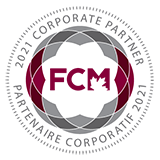
Conflict is a fact of life. Like it or not, we all face it in one form or another. It can be personal, financial, political, emotional or professional. We can face it at home, with our extended families, with friends and with our co-workers. Unresolved conflict, or worse, poorly handled conflict, can cause stress, frustration, anxiety and can even have a negative effect on our health. Conflicts that are ignored or managed badly don't go away. Instead they begin to take on a life of their own, causing those involved to feel increased resentment and hostility towards one another. It can irreparably damage relationships in our personal lives, have a negative effect in our professional life and for organizations, can lead to a loss of productivity, increased absenteeism and amplified turnover. But conflict is not a problem in itself; it's what we do with it where trouble arises.
Where does conflict come from?
Conflict comes about from differences - in needs, values, beliefs and motivations. Differences in generations, cultures, communication styles and personalities can also lead to disputes and disagreements. And if someone is in a rotten mood or is feeling hugely overwhelmed, conflict can erupt in a split-second.
Unresolved conflict can consume tremendous amounts of our attention and we all know how exhausting it can be. It drains us of energy, effects our concentration and left unattended, can cast a dark shadow on all areas in our daily lives. It's often not easy to fix the problem, but the good news is, by learning resolution skills to manage difficult situations with poise and finesse, we can effectively settle disputes and create a positive solution for all parties involved. Some approaches can be adopted immediately, others might take a bit of mindful practice to perfect. This year, try making a resolution to be successful in conflict resolution and aim to turn those difficult situations around with a peaceful solution.
1. Stop, Breathe and Listen
When a disagreement occurs, we as humans can tend to grow immediately defensive and argumentative. We stop hearing what the other party is saying, can get stuck on one thorny statement and can quickly lose focus on what the dispute is really about. Next time, try quieting your mind and stopping the churn of negative thoughts. Be open to hearing whatever may be said and take a deep breath (or two, or three) and really listen to what the other party is saying. Maybe it's just a simple misunderstanding, maybe it's not. By remaining calm and taking a A New Year's Resolution to Succeed in Conflict Resolution moment to fully comprehend and evaluate the situation you'll have a clearer picture of the problem and a greater chance of resolving it peacefully.
2. Identify the true root of the problem
You've listened to and heard what the other party has to say, but it's a wise move to learn as much information as you can before reacting. Ask questions to help you better evaluate the situation and to make the other party feel as though you are genuinely working towards a solution. Some questions you might try asking are; "When did you begin to feel upset?", "Can you tell me how this incident began?", "What about this situation is most troubling to you?" and "What would you like to see happen?". The more information you have about the cause of the conflict and the feelings of the other person, the easier it will be to resolve the issue.
3. Acknowledge and validate what has been said
There are two sides to every story and all parties need to have a chance to share their side. As you listen, acknowledge and validate their feelings by saying things like; "I see", "uh huh" and "I understand". These simple phrases help demonstrate open-mindedness and can encourage the other party to open up more, oppose less and be more willing to hearing your perspective on the situation.
4. Use ‘I’ statements and try to avoid blame
Once we start to blame and use you' statements; "you did ", "you are being ", "you said " the other party's defenses will rise causing greater resistance to resolution and closing the doors to communication. Try using ‘I’ statements instead; "I feel " "I think ", "I had the expectation of ". By using ‘I’ statements, it allows you to be heard by the other party and also shows that you are willing to take responsibility in the situation.
5. Come up with a solution, together
The goal at this stage is to stop finger pointing and to start working together towards resolution. With both sides having shared their viewpoint, the next step is to identify ways in which the conflict can be resolved. Give each other the opportunity to express some ideas on solutions. Remain flexible and get creative - there are many solutions to a single problem. The key here is to identify a solution that satisfies all parties involved.
6. Affirm, forgive, thank and let go.
A handshake or a kind word will give closure to the conflict, allowing space for forgiveness. Forgiveness does not indicate defeat. Instead it means that the parties involved can now move forward feeling comfortable and at peace in each other's presence. Thank each other for working things out which sends out a positive message of conciliation and gratitude, then agree together, to move on and let go.
Conflict is a natural thing that can sometimes enter the workplace. Leaving Conflict Management to chance is never the best decision. Register for our upcoming Conflict Resolution Workshop taking place on January 28th, 2016. Learn to use finesse and expertise to handle conflict and create a positive impact on everyone involved by exploring the causes of conflict, how to manage it and a four-step process to resolve conflict through teamwork. Click this link to learn more and to register
https://mycspn.com/event/conflict-resolution-public-workshop-2/













